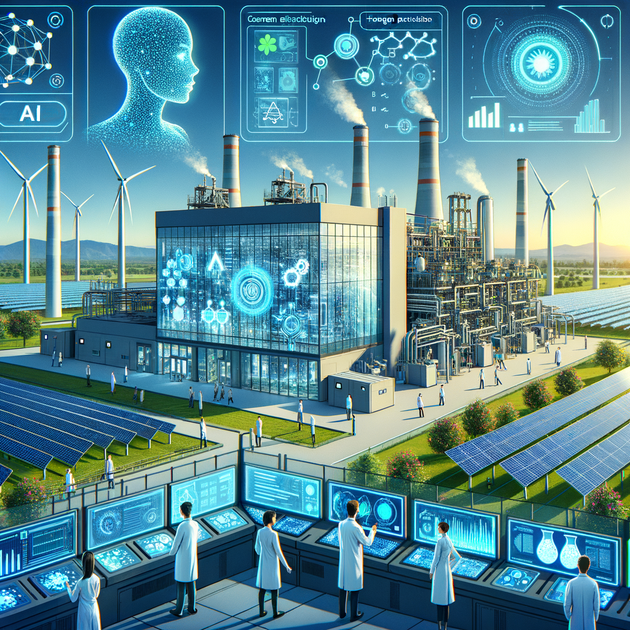The AI Revolution: Unveiling Breakthroughs in Green Hydrogen Production
By leveraging artificial intelligence, researchers are on the brink of a green hydrogen revolution that could reshape our energy future. Here’s how an AI-generated recipe for catalysts is making waves in sustainable energy research.
How AI Is Powering the Green Hydrogen Future
Imagine a world where our primary source of energy is clean, renewable, and abundant. This dream is closer to reality thanks to groundbreaking research from the University of Toronto. Scientists have harnessed the power of AI to find a new catalyst that could pave the way for large-scale green hydrogen production, a vital step toward a sustainable energy future.
In recent years, the impacts of climate change have become increasingly visible and urgent. Green hydrogen, produced through the electrolysis of water using renewable energy sources, offers a promising solution to reduce our carbon footprint. This green hydrogen can be used in various sectors, from transportation to heating homes and businesses.
Understanding the Science: Simplified
The process of creating hydrogen fuel involves splitting water (H2O) into its constituent elements, hydrogen (H2) and oxygen (O2), using electricity. This is done with the help of catalysts that accelerate the reaction. Until recently, iridium oxide was the go-to catalyst for this process. However, iridium is rare and costly, making it unsustainable for widespread use.
Example: Traditional methods using iridium oxide face challenges due to the scarcity and high cost of iridium. In contrast, the newly discovered ruthenium, chromium, and titanium catalyst is both more abundant and cost-efficient.
The AI Discovery: A Game-Changer
To overcome the limitations of iridium-based catalysts, researchers turned to artificial intelligence. By creating an AI program that could simulate and analyze over 36,000 different metal oxide combinations, the team expedited the discovery process significantly. What traditionally would have taken years of trial and error in the lab was accomplished in a fraction of the time.

The Role of the Canadian Light Source
The Canadian Light Source (CLS) at the University of Saskatchewan played a crucial role in this discovery. Think of the CLS as a super-powered X-ray microscope. It allows scientists to observe atomic structures and movements that are invisible to the naked eye.
After identifying a promising catalyst combination—ruthenium, chromium, and titanium—the researchers used the CLS to delve deeper. By shining powerful X-rays on the new catalyst during the water-splitting reaction, they could study its atomic arrangement and behavior in real time.
Remarkable Results and Future Prospects
The AI-recommended alloy surpassed expectations, performing 20 times better than the benchmark catalyst in stability and durability tests. This breakthrough highlights the potential of AI to accelerate solutions to complex problems, such as those posed by the climate crisis.
“The computer’s recommended alloy performed 20 times better than our benchmark metal in terms of stability and durability. It lasted a long time and worked efficiently,” said Jehad Abed, part of the AI development team.
While this discovery marks a significant milestone, the journey doesn’t end here. The new catalyst requires extensive testing under real-world conditions to ensure its viability for large-scale hydrogen production. Nevertheless, this success story exemplifies how AI can drive rapid advancements in sustainable technologies.
AI and the Future of Sustainable Energy
Artificial intelligence is proving to be an invaluable tool in the quest for sustainable energy solutions. By rapidly analyzing huge datasets and simulating countless possibilities, AI can uncover hidden patterns and optimal solutions that would be impossible to achieve manually.
Beyond green hydrogen production, AI’s potential applications in climate science are vast. From optimizing energy grids to predicting environmental changes, AI is poised to play a pivotal role in our fight against climate change.
As researchers continue to explore the capabilities of AI, one thing is clear: the synergy between human ingenuity and artificial intelligence holds immense promise for a sustainable future. By embracing these technological advancements, we can accelerate our progress toward a cleaner, greener world.
Join the Conversation
What do you think about the potential of AI in transforming our energy landscape? How do you envision AI contributing to other areas of environmental research? Share your thoughts and join the discussion in the comments section below!
